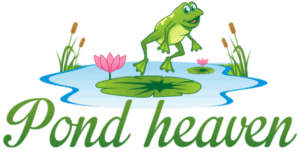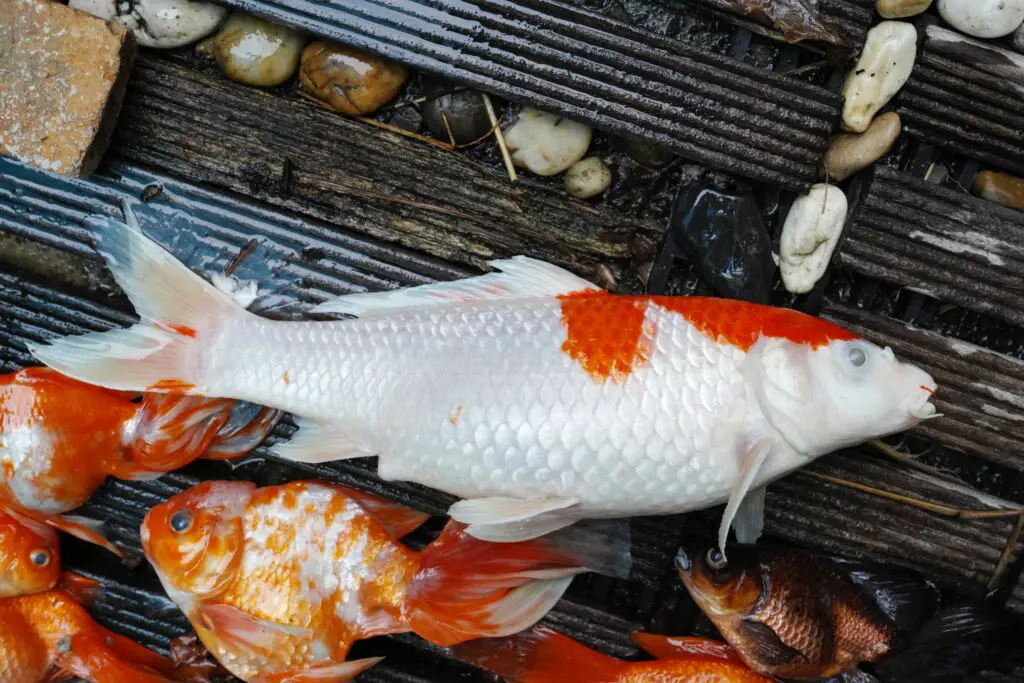
Nature doesn’t waste. What was once alive gives back to its ecosystem feeding other organisms that scavenge on the remaining matter of dead fish. The question of do koi eat dead fish is one worth exploring, as the tranquility and serenity these beautiful creatures evoke is a far cry from the picture of seeing a koi feed on dead fish.
Koi fish can and will eat dead fish, not because it is part of their diet, but because they are opportunistic omnivores that tend to be bottom feeders vacuuming the waterbed and eating up debris. The dead fish matter will get caught in the debris of the water bed and get eaten up by the Koi.
We look at why Koi fish eat dead fish and find out if it is a necessary part of their diet or just an accidental meal, and what you should do if you find any dead fish in your pond.
Pro Tip: If you’re tired of wasting money and making costly mistakes on the koi-keeping hobby or are thinking about buying koi fish but don’t know where to start, I strongly suggest you check out this ebook. I recently read this ebook, and it contains SO much useful information, such as:
- 3 proven steps to identify koi fish diseases
- WARNING: 3 things you should NEVER do when it comes to caring for koi
- When to seek professional help when it comes to looking after your koi
Do Koi Eat Dead Fish?
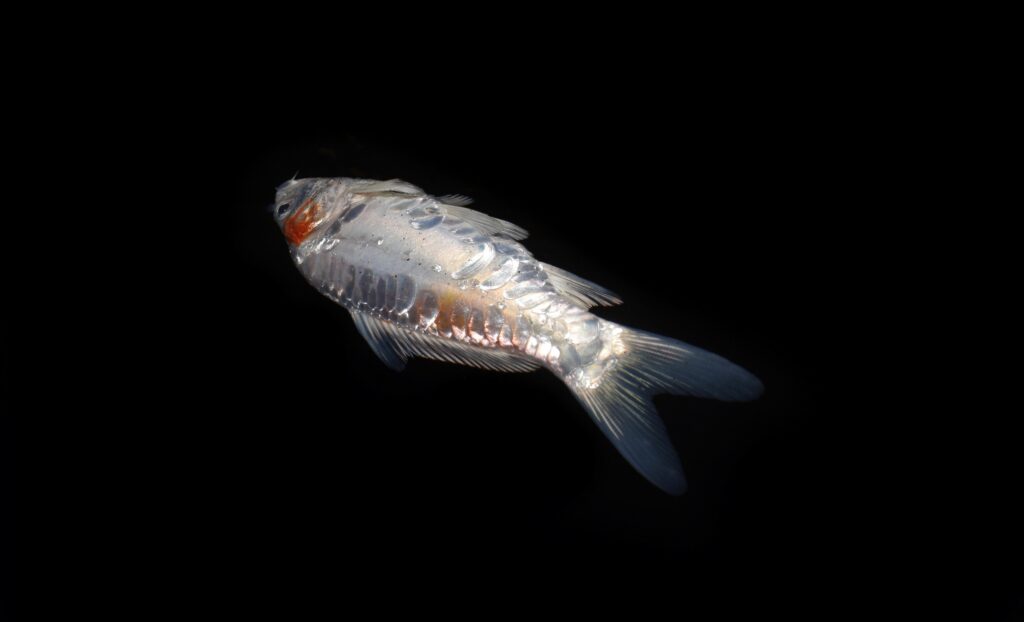
Koi fish are a colorful variant of the carp and descendants of the Asian Amur Carp. Most carps are bottom feeders that scavenge for food in the wild, unlike the tamed ornamental koi that are kept in ponds and water gardens.
In nature, carp fish will scavenge through the debris on the water beds eating up any debris and potential food material in front of it. This sometimes includes dead fish matter that gets trapped in the debris.
Koi fish are not cannibalistic or carnivores; they are opportunistic omnivores that will eat what is in front of them. Koi fish have been trained to swim to the surface when their owners feed them, but in general, they scavenge the bottom of the ponds for plant debris and any tasty morsels.
When fish die, they will sink to the bottom of the pond as they are denser than water. Small dead fish can get stuck under debris that the Koi fish filter through while vacuuming the water bed for food.
Once dead fish decompose, they release gasses, making them float at the surface. Koi fish consider the floating object a potential food source and eat the small fish. However, Koi fish sometimes spit out what they have swallowed as the taste does not appeal to them.
So, Koi fish do not turn into cannibals and feast on the decaying flesh of dead fish, but it’s more of an accidental ingestion during their food search.
Is It Safe For Koi To Eat Dead Fish?
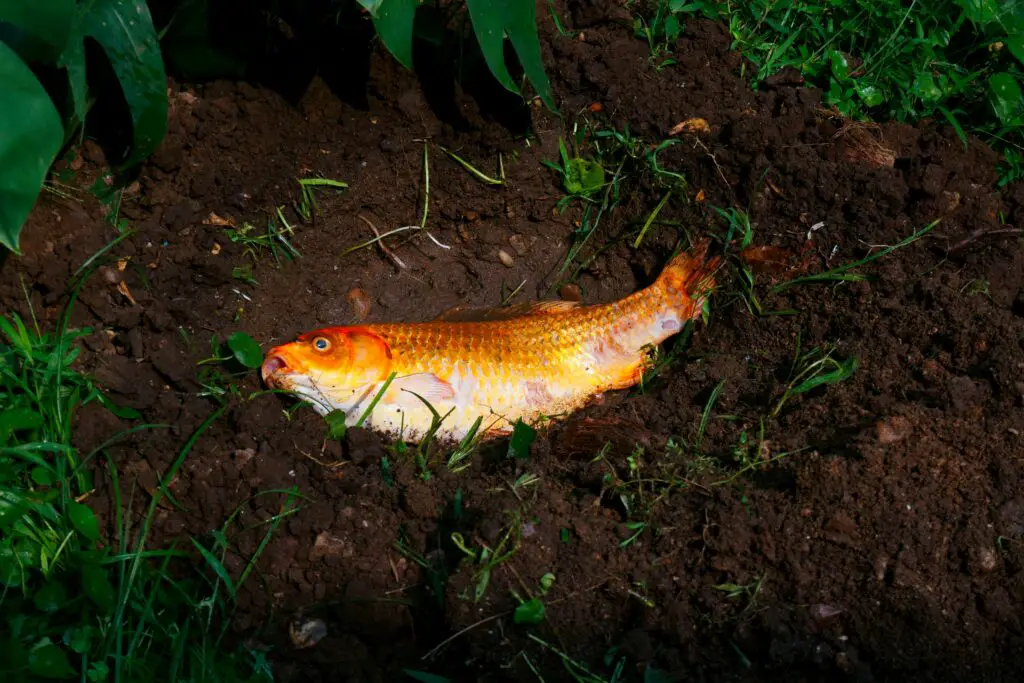
Koi fish can eat dead fish, and it is an inevitable situation. But how good is it really for Koi to eat dead fish?
Fish die for many reasons, old age, disease, bad water conditions, or stress. While most of these reasons won’t critically harm your live fish, a diseased fish can. Once it decomposes, it can spread the sickness to healthy Koi fish in the pond.
Decaying fish release all sorts of substances introducing parasites and diseases into the water, causing massive ammonia spikes in the pond. A definite no-no for any fish.
Although it’s a natural part of nature, removing dead fish from ponds is best to maintain good quality water for the remaining Koi.
What Do Koi Fish Eat?
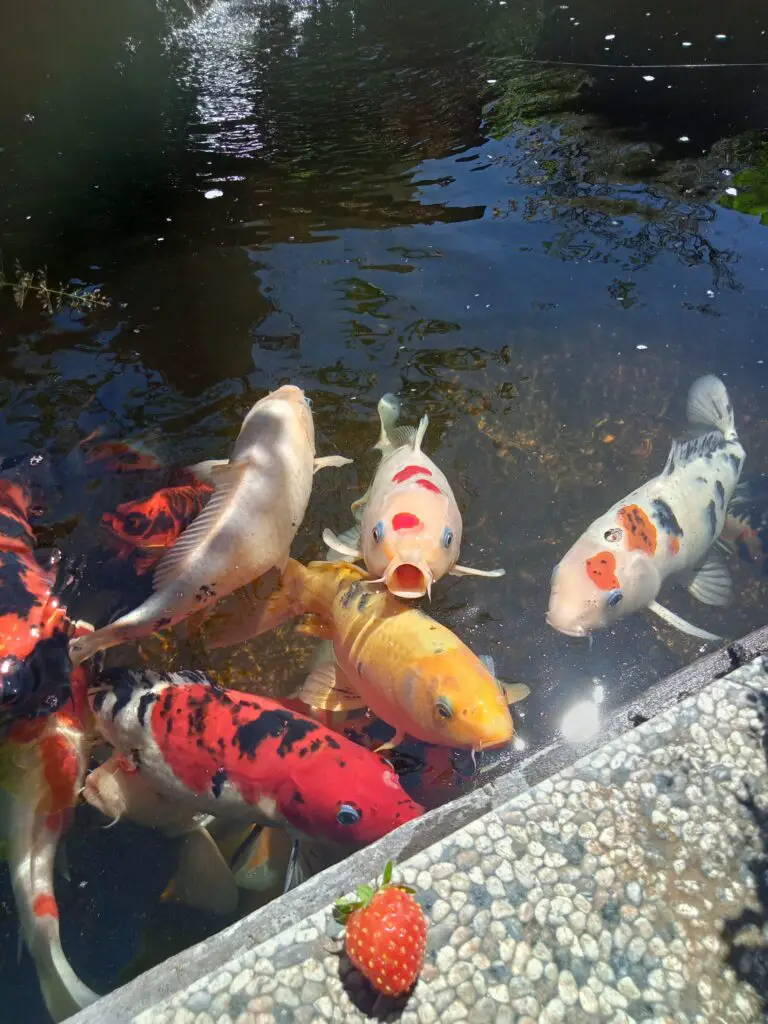
As we previously said, Koi fish are opportunistic feeders with an insatiable appetite to fill their stomachs. They gobble down anything in front of their mouths, such as small dead fish that are not removed, which will also go down the hatchet simultaneously.
However, they sometimes spit out items that don’t quite satisfy their pallet. But here are some items you can feed your Koi fish above the formulated Koi pellets that form a balanced diet for your pets.
| Food Items For Koi Fish | ||
| Vegetables | Fruits | Treats |
| Garlic | Melon | Silkworms |
| Broccoli | Grapes | Frozen or live bloodworms |
| Leak | Kiwi | Tubifex worms |
| Endive | Strawberry | Earthworms |
| Cauliflower | Mandarin | Black mosquito larvae |
| Squash | Oranges | Tadpoles |
| lettuce | watermelon | Shrimp |
| Duckweed | ||
| Hyacinths | ||
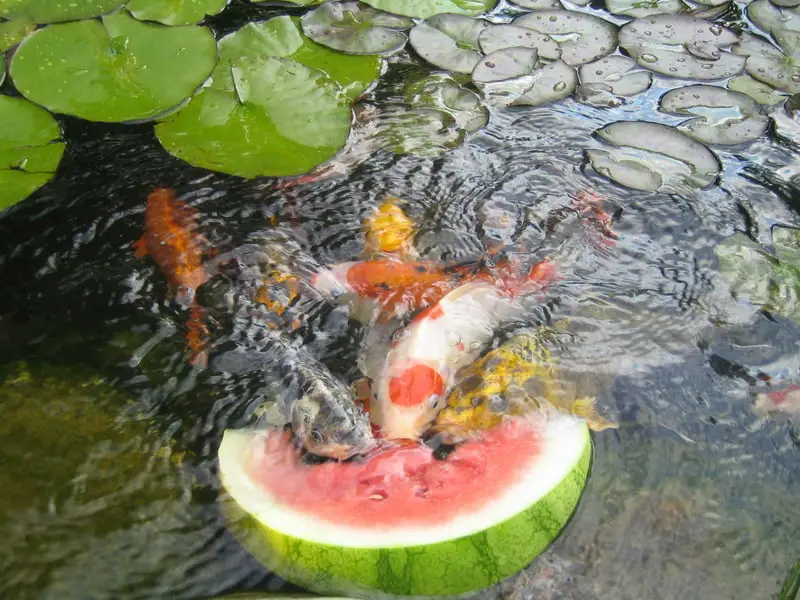
What To Do With Dead Fish In Your Pond

Going out to feed your fish, you expect to be greeted by hungry Koi that are overly excited to see you. Finding a dead fish amongst your Koi is always a sad event. Still, you must remove the dead fish immediately.
In nature, open waters have their way of discarding dead fish. In contrast, constructed water garden ponds, on the other hand, can go from good to bad very quickly.
Depending on the size of your pond, it can be as easy as scooping a dead fish with a net out of the water in small ponds, but more extensive ponds pose more of a problem.
The size and depth of your pond can make it difficult to see or locate a dead fish, especially if it remains at the bottom of the pond, and that is if you even realize a fish has died.
Not all dead fish will float. Most often, the fish will sink to the bottom, and as they decompose, the build-up of internal gasses will float the fish to the surface. However, this is not always the situation, and some dead fish may get caught up in debris at the bottom and will never surface.
Whatever the outcome, removing any dead fish once you see it is imperative to prevent any contamination of your water that may endanger the health of your Koi fish.
What Happens To The Water When Fish Die?
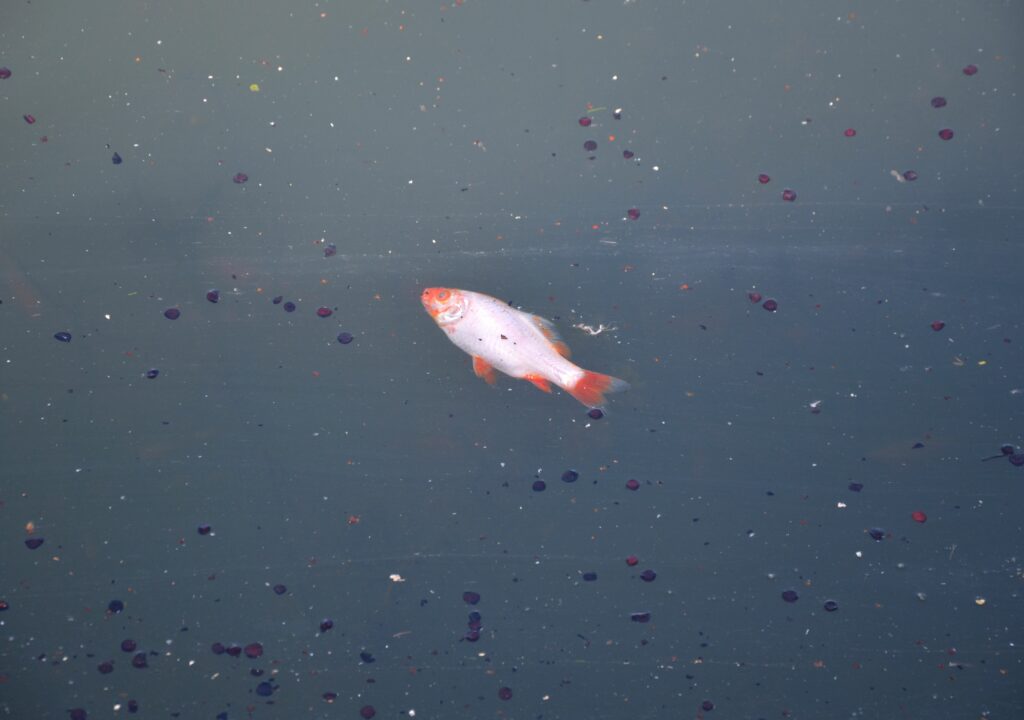
Decomposing fish release gasses that can quickly spike ammonia levels in the water, which is highly toxic to fish.
When left unchecked, the higher ammonia levels will prevent your Koi fish from extracting sufficient energy from the food; they will become lethargic, deteriorating into a coma before they die.
Even small amounts of ammonia can burn the gills on the Koi, preventing them from excreting ammonia and causing a build-up of ammonia inside the fish.
The decay process of dead fish also uses up dissolved oxygen levels in the water.
Here are some noticeable signs that suggest you may have a dead fish at the bottom of your pond affecting the water quality.
- Cloudy water
- Sudden algae problems
- Sick or lethargic fish
- You Koi fish swim at the surface of the water, gasping for air
- Fish congregating around fountains or waterfalls
It’s essential to have your water tested if you notice any of these signs. Koi fish are hardy creatures and can handle fluctuations in water conditions. Still, a sudden spike in water quality can be detrimental to the fish.
Should You Do A Water Change After Finding Dead Fish?
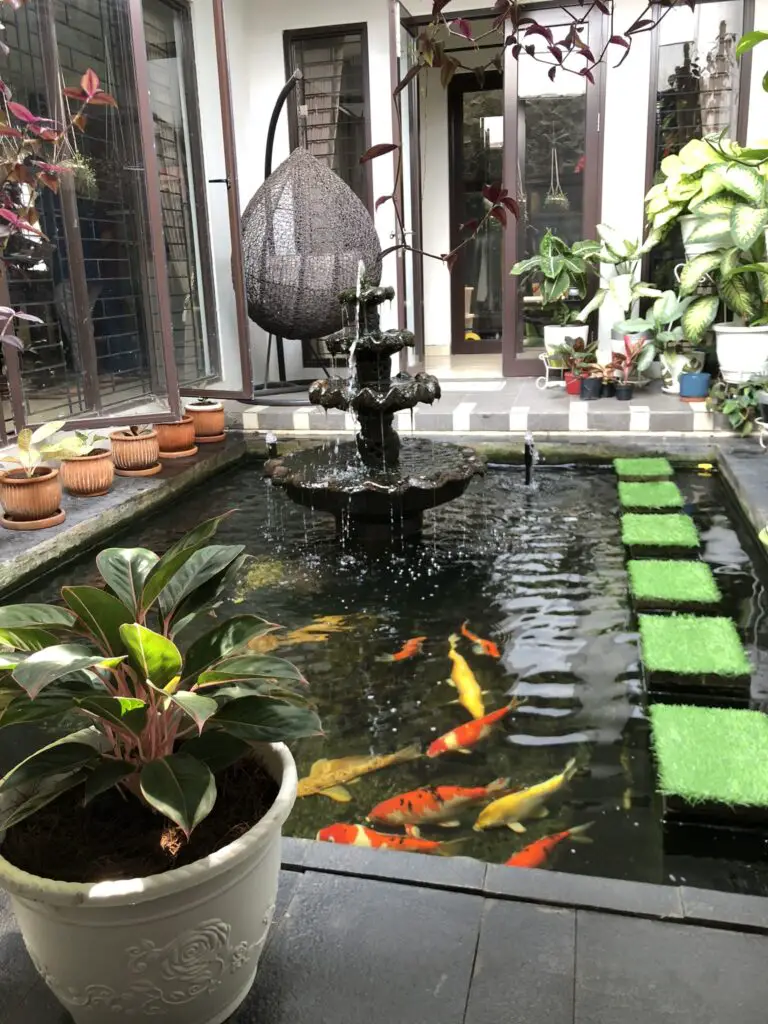
It’s always important to do a water change in your pond. Apart from decaying leftover food, fish waste, and decomposing plant matter that can alter the pH levels and affect the water’s hardness, a dead fish can quickly affect the quality of the water.
Water changes are the most effective way of dealing with high ammonia levels. A 25% to 50% water change is necessary to remove the excess ammonia.
Do your water changes at 10% to 20% intervals to avoid sending your Koi fish into shock. Water changes can quickly change the pH levels and water temperatures. Koi fish are vulnerable to rapid changes in water conditions that can make them sick or even kill them.
Conclusion
Koi fish have a ravenous appetite and will scavenge their surroundings for food. Eating dead fish is not part of a Koi fish diet. It is often accidental that they consume the decaying matter of dead fish while rummaging through the waterbed of the pond or ingesting small floating dead fish, mistaking them for tasty insects. Ideally, it’s best to remove dead fish to maintain healthy and optimum water conditions for the Koi fish.
Related blog posts
- Do koi float when dead?
- The 9 Things That Can Cause Your Koi To Die Suddenly
- What Does A Sick Koi Look Like?
- How Long Can Koi Live Out Of Water?
- 5 Reasons Why Your Koi Fish Is Bloated (And What To Do About It)
References
https://pubs.nmsu.edu/_w/W105/index.html
https://extension.psu.edu/water-quality-concerns-for-ponds
https://www.sciencefocus.com/nature/why-do-fish-float-when-they-die/
